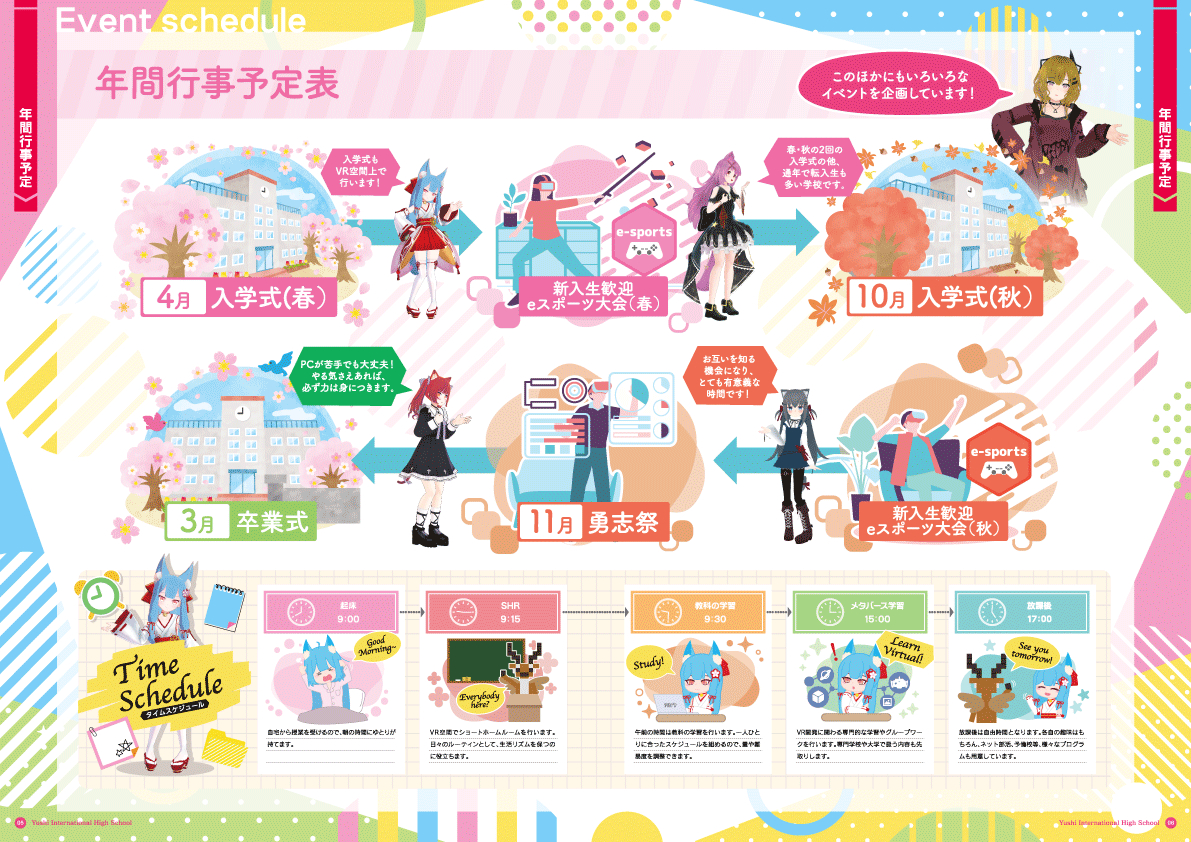J-STORIES - In Japan, so-called “school refusal” is a major problem, with 299,048 children not attending elementary and junior high school and 60,575 not attending high school in 2022, according to a national survey. Despite the overall child population falling, this number has increased for 10 consecutive years. There are various reasons for school refusal, but bullying is widely considered to be a factor. In 2022, reports of bullying in junior high schools, high schools and special-needs schools reached a record 681,948.
So, how can Japan still provide educational opportunities to children who don’t attend regular school?
Free schools (private facilities that offer learning support and educational advice) and distance learning services that operate over the internet have stepped in to deal with the increasingly serious problem of school refusal. Yet, children who take advantage of these services can still lack contact with teachers and other students; and often they don’t have a chance to acquire friends through learning.
This year the Japanese Ministry of Education, Culture, Sports, Science and Technology (MEXT) put forward its “Cocolo Plan,” a comprehensive strategy to address the school refusal issue. It included an innovative initiative to provide education to school refusers in the virtual reality space referred to as the metaverse. MEXT’s stated goal is to reduce school refusal “to zero.”
In the metaverse, children can communicate with others as at school, but without having to attend a physical school. They can choose an avatar (an online visual representation of oneself) and interact in a relaxed way with teachers and other students. The school can also monitor students' movements and activities in the online space, while watching out for bullying or other actions that might cause school refusal.

Yushi International High School in the southern prefecture of Kumamoto has set up the first metaverse high school that allows students to officially graduate. The “metaverse student” course began this April (the start of the Japanese school year), lasts three years, and offers the same qualification as a physical high school. It also allows students to join midway through the school year.
The school’s first cohort of 25 students includes 17 male learners and eight female learners, who come from both the Tokyo area (around 30 percent) and all over Japan. Most are in their teens to 20s, with also some students in their 30s. Their reasons for attending the school vary, but include being interested in the metaverse or having been a school refuser in the past and wanting to rejoin education.

Students are free to use avatars of any gender, and animal avatars are also allowed. Many male students choose to use female avatars. Learners can also wear any uniform, as long as it's not too revealing.
A male student in his 30s who uses a female avatar named Yuto told J-Stories: “I can talk to anyone, whatever their age. I feel comfortable because the barrier between my appearance and how I feel inside has been removed.”
As well as providing a homeroom, the metaverse allows students to take part in “radio taiso” morning exercises and students can ask teachers questions about lessons directly using the app Discord. Interaction through extracurricular activities and school clubs is also possible, with some students even visiting “virtual theme parks” with their friends.
MEXT is promoting the use of information and communication technology (ICT) in education and expects avatars to become a tool for communication in distance learning. Such technology is already used to support school refusers, but the ministry says it is also hoping to use it to help other students, too.

Yokohama-based company AOMINEXT has provided technical support to plan, set up and operate the “metaverse student” system.
Aomi Next CEO Nakamura Sanemori said that he was first approached by Yushi International High School when participating in a metaverse exhibition. The school said that it was considering using the metaverse as part of efforts to improve all its distance education provision.
But the big challenge was to create a metaverse system where school and students could communicate freely and easily. To date, some schools have used an online metaverse, and some have used internet connected VR headsets, but Namura developed a system that efficiently makes use of both, and the school is the first to employ it.

According to Nakamura, there are three main advantages for school refusers who use the metaverse. Firstly, there is no commuting and students can use their time in a way that suits their academic path. Secondly, the school deals flexibly with students who entered high schools that weren’t suited to their actual academic ability. Thirdly, it is well suited to students who have an interest in the metaverse.
Nakamura points out that school refusal is prompted not just by bullying and poor health, but a variety of reasons. Just because a student refuses school, that doesn’t mean they are poor at communicating or don’t want to communicate. In the metaverse, where participants don’t know each other’s true genders and nationalities, introverted students sometimes start to talk animatedly.

“Actually, compared to a game the metaverse feels very ‘human,’” said Nakamura. “In terms of technology, it is exactly the same as a game, but there is a classroom in the metaverse, there are students, and there are teachers. Ultimately, it’s based on human interaction and social activity.”
On the other hand, some things still need improvement. For example, because all actions are performed via the controller it is difficult to write “by hand” in class. In particular, the school has had to teach mathematics using a standard computer and notebook. But recently a pen-type device for use in 3D space has been developed in the U.S., and once it is commercialized the company hopes to use it.

And although the metaverse does provide a new communication space for school refusers, it is not an infallible way to keep a group together. There is a danger that students who feel isolated may suddenly disappear from the space.
Nakamura founded the Aomi Next startup in 2020. It develops and uses metaverses for corporate and local government projects. As well as educational settings, he has also run projects such as remote viewing of museum artworks, and realistic simulations of train stations that allow people to experience being a station attendant.
Nakamura, who is in his early 20s, said: “Sixteen-year-olds often don’t have a clear vision for the future. As a school, we need to provide them with plenty of things to use to find that vision. I want to provide them with a chance to act for themselves, work hard and grasp opportunities.”
Nakamura plans to hold a cultural festival in the metaverse. He is also working out how to provide temporary access to the metaverse so that ordinary people can visit the school and enjoy it.
Translation by Tony McNicol
Top page photo by AOMINEXT
For inquiries about this article, please contact jstories@pacficbridge.jp
***
Click here for the Japanese version of the article


_smallthumbnail.jpg)
_smallthumbnail.jpg)

![[Podcast] Japanese technology to supercharge human fertility (Part 3)](https://storage.googleapis.com/jstories-cms.appspot.com/images/1766558713084place-for-scientific-research-2025-03-07-14-08-49-utc%20(1)_bigthumbnail.jpeg)
![[Interview: Part 2] A digital approach to tackle child hunger in Japan with dignity](https://storage.googleapis.com/jstories-cms.appspot.com/images/1766130666509unnamed_bigthumbnail.jpg)
![[Podcast] Japanese technology to supercharge human fertility (Part 2)](https://storage.googleapis.com/jstories-cms.appspot.com/images/1765863548035unnamed-7_bigthumbnail.jpg)
![[Podcast] Japanese technology to supercharge human fertility (Part 1)](https://storage.googleapis.com/jstories-cms.appspot.com/images/1765440905082unnamed_bigthumbnail.jpg)
_bigthumbnail.jpeg)





![[Interview] When digital and physical worlds meet](https://storage.googleapis.com/jstories-cms.appspot.com/images/1747974430456unnamed-2_smallthumbnail.png)




_smallthumbnail.jpeg)

![[Interview: Part 1] From nourishing souls to feeding the hungry](https://storage.googleapis.com/jstories-cms.appspot.com/images/1763695595492unnamed_smallthumbnail.jpg)

